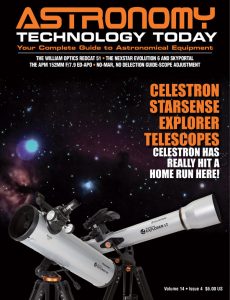 The Dark Sky Finder website was created to provide a simple way to find areas that conducive to viewing the night sky. It provides maps, driving directions and more
The Dark Sky Finder website was created to provide a simple way to find areas that conducive to viewing the night sky. It provides maps, driving directions and more
The ever-growing impact of light pollution is making it increasingly difficult for amateur astronomers to find dark sky sites that are convenient to visit without driving a long way. (For more information about light pollution and how to reduce it, visit the International Dark Sky Association.)
Among the available maps Dark Sky Finder provides is a current infrared satellite map that can be viewed day or night. Clouds will show up as white, and clear air will generally be darker. Infrared often doesn’t show you thin clouds or low-lying clouds such as fog. But it is the only option for seeing where the clouds are at night
Before looking for a dark site, consider what it is you want to see. For many people getting to a 100% dark sky is not possible without spending an entire day driving. But if you look for a site where the sky is only dark in the direction you want to observe, it becomes easier. For example, if you want to see the core of the milky way galaxy, look for a place that is dark to the south with no major cities in that direction.
Dark Sky Finder also offers a current infrared satellite map that can be viewed day or night. Clouds will show up as white, and clear air will generally be darker. Infrared often doesn’t show you thin clouds or low-lying clouds such as fog. But it is the only option for seeing where the clouds are at night.
 And to make it easier for you to get the most extensive news, articles and reviews that are only available in the magazine pages of Astronomy Technology Today, we are offering a 1 year subscription for only $6! Or, for an even better deal, we are offering 2 years for only $9. Click here to get these deals which only will be available for a very limited time. You can also check out a free sample issue here.
And to make it easier for you to get the most extensive news, articles and reviews that are only available in the magazine pages of Astronomy Technology Today, we are offering a 1 year subscription for only $6! Or, for an even better deal, we are offering 2 years for only $9. Click here to get these deals which only will be available for a very limited time. You can also check out a free sample issue here.

